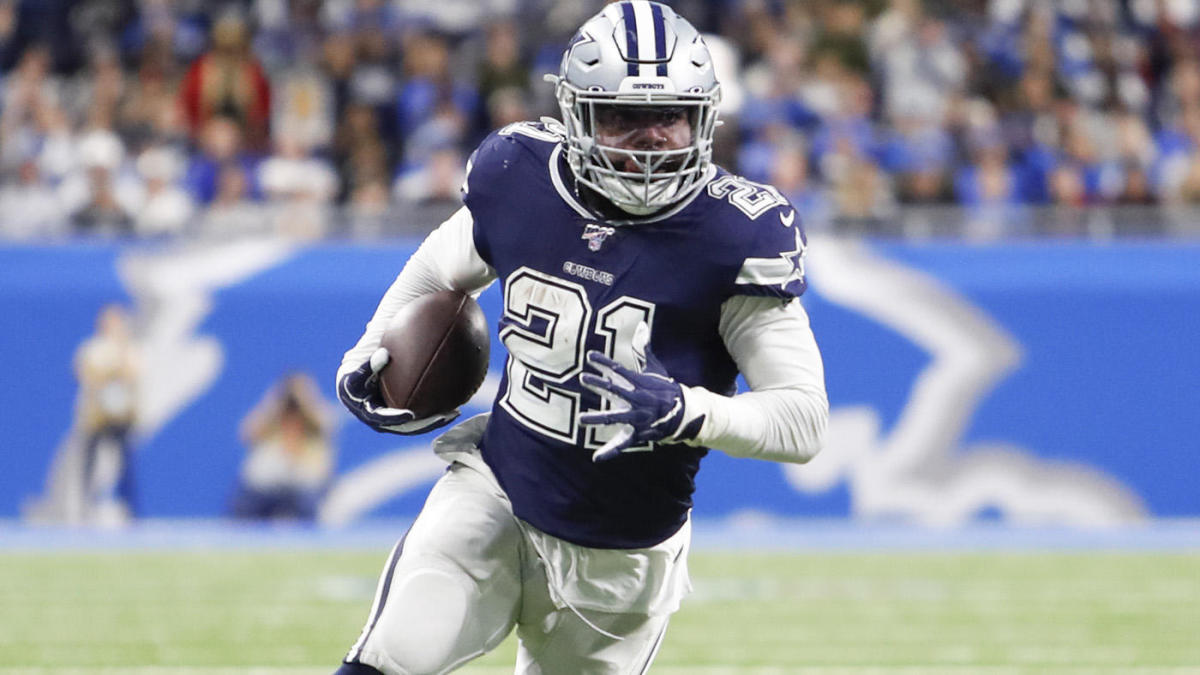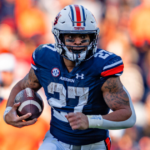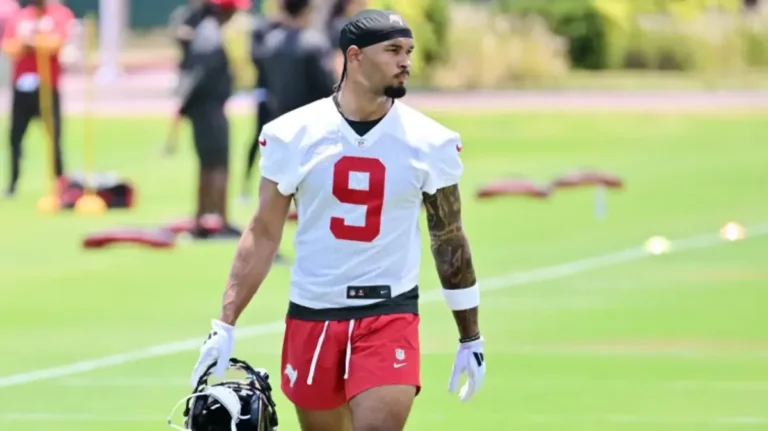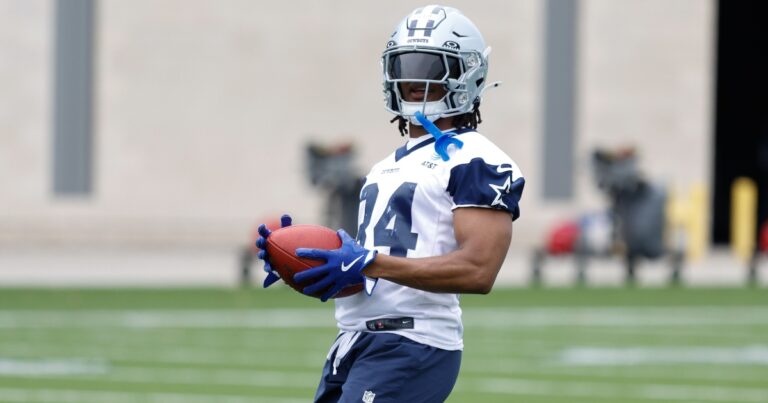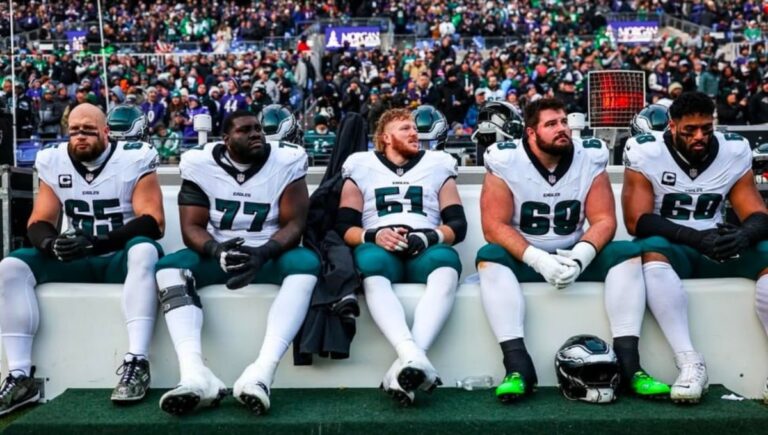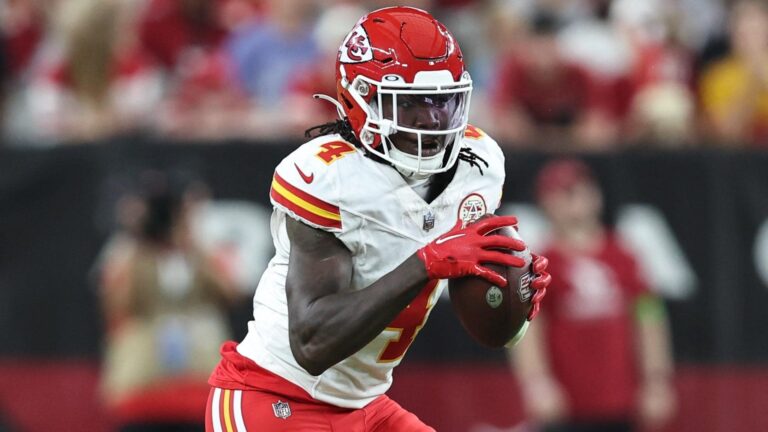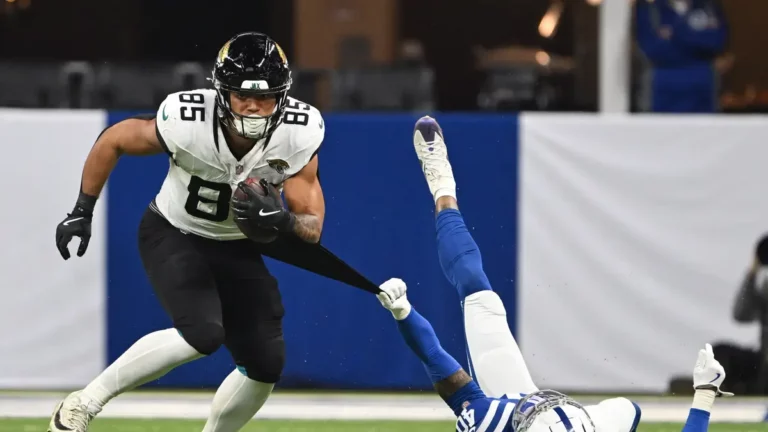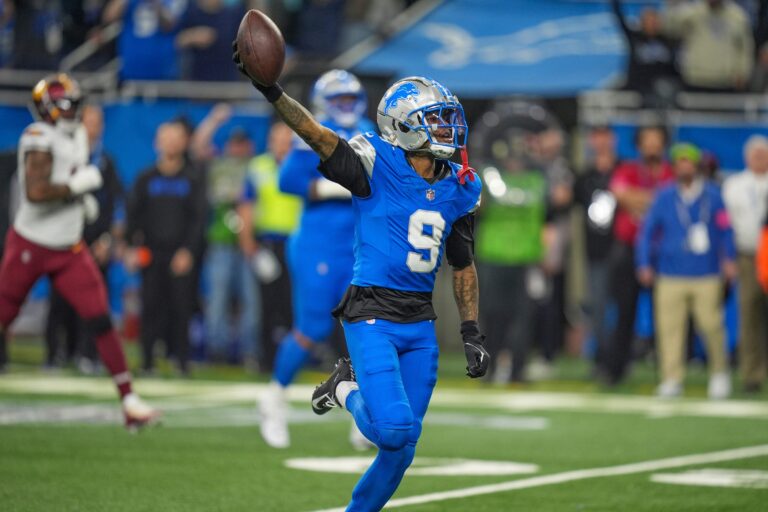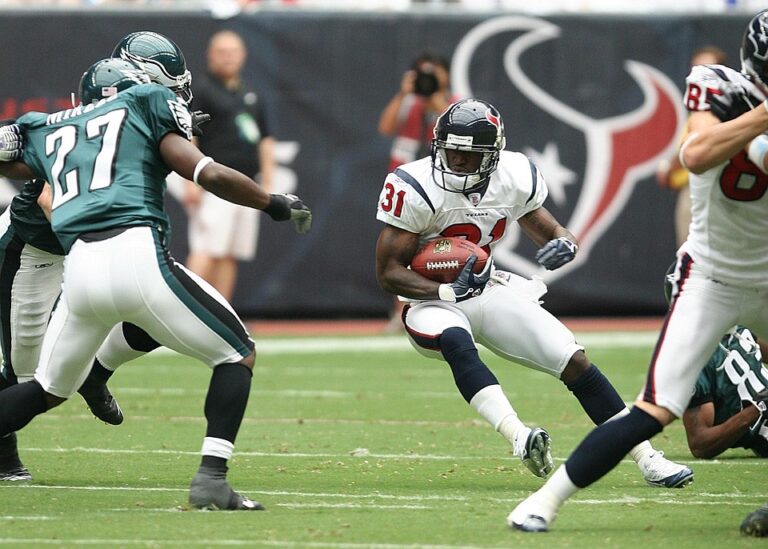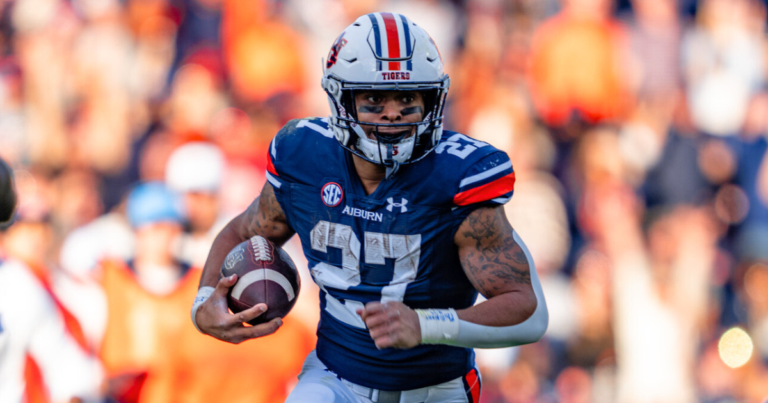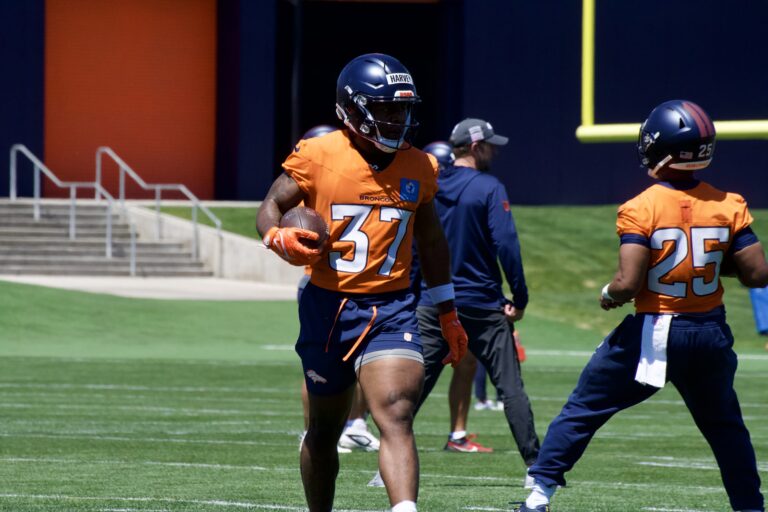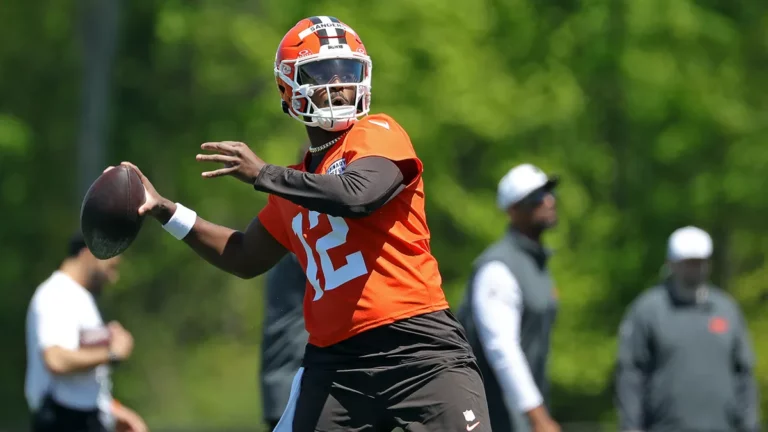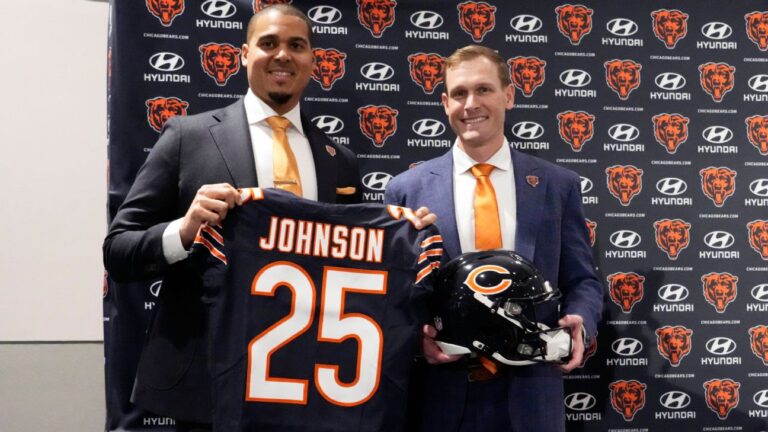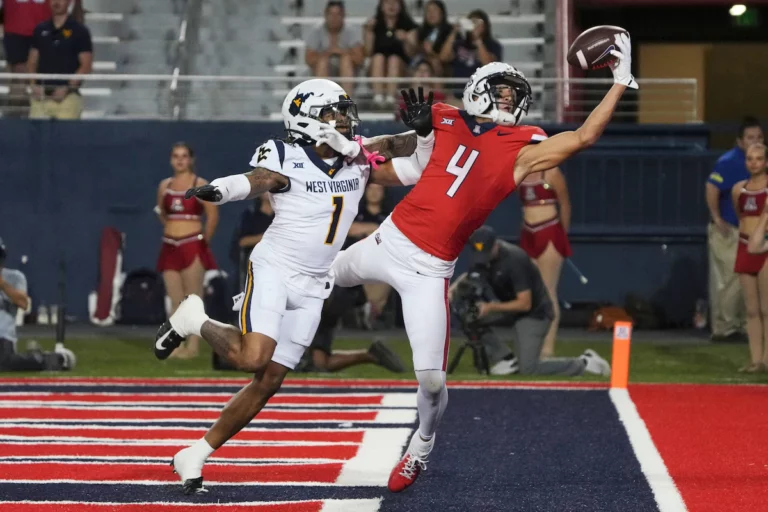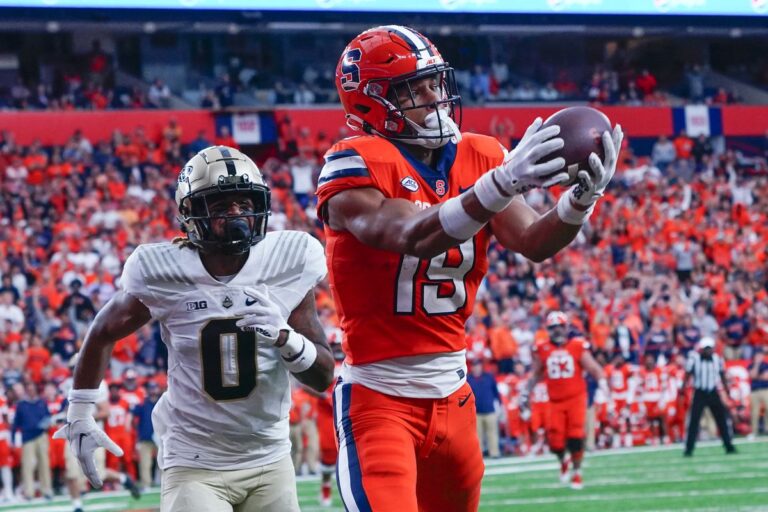Ezekiel Elliott is one of the most polarizing players in fantasy football this year. Will he bounce back from his recent rough patch, or is it time to give up for good? Find out below what to do with Zeke and other potential trade pieces using my Expected Fantasy Points model!
For a more general overview of my trading strategy, click here.
The Wolf’s Rest of the Season Rankings are a great source to gauge a specific player’s trade value.
If you have any questions or feedback, let me know @RSJ_Jackson on Twitter!
All data in this article uses full PPR scoring. A sample of the data through Week 8 is pictured. The PDF hides the weekly data for Weeks 1-3 to save space, but all data is still factored into the season averages. For the full data, click the links below!
*DOWNLOAD The Expected Fantasy Points Report – Week 8 2020 – PDF*
**DOWNLOAD THE EXCEL VERSION!**
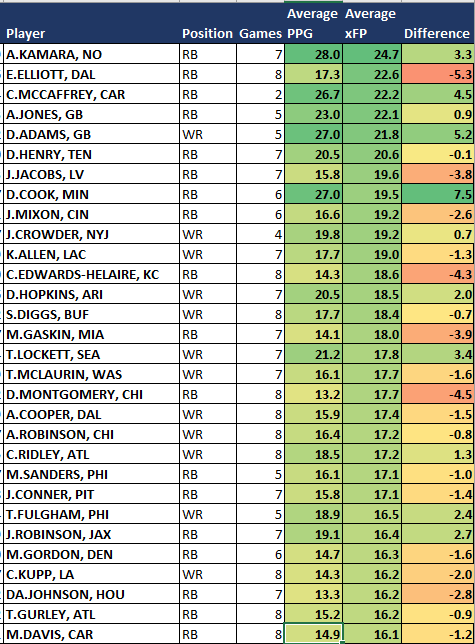
Expected Fantasy Points
I built the model based on a metric called Expected Fantasy Points (xFP). A player’s xFP is calculated based on the value of each target or carry, using historical data attributes that correlate highly with actual fantasy points scored. You can find a more detailed breakdown of how this works here.
Expected Fantasy Points essentially show what an average player would have done with the opportunities seen by any given player. We can then subtract the player’s actual fantasy points scored to arrive at the difference, a key metric.
How to Interpret Expected Fantasy Points
The difference between expected and actual fantasy points comes from two sources:
Talent/Situation
We would expect the most talented players in the NFL to score more fantasy points than their expected fantasy points. That’s pretty obvious since xFP is based on the averages of all players. Also, a given coach or scheme might lead to a sustainable difference in actual over expected points. A carry in Kyle Shanahan’s offense will typically produce more points than a carry in Adam Gase’s offense. A carry behind an elite offensive line would be more valuable than a poor one.
These are all sustainable ways for a player to consistently outperform or underperform their expected points. Because of these differences between players, we should not assume that the difference between expected and actual points will always regress to zero. In other words, don’t blindly buy any player with a negative difference. Don’t sell every player with a positive difference.
Luck
The main reason to use expected fantasy points is to identify players who are experiencing very bad or very good luck. Unlike the previous differences, luck will even out over a long period. We want to buy players who are having bad luck and sell players who are having good luck.
Separating differences that are sustainable from differences due to luck can be tricky. It’s not an exact science. However, most players will score within a few points per game of their expected fantasy points for the season. The players with the largest differences are the ones most likely to be benefitting or suffering from luck.
Trade Targets
During the season, the main purpose of using my Expected Fantasy Points model is to help you win trades. Remember, we want to buy players who are getting unlucky, and sell players who are getting lucky.
Week 9 Buy Low
Josh Jacobs
Jacobs posted a pedestrian 12.8 fantasy points in Week 8, following a 6.1-point showing in Week 7. Since the Raiders had a Week 6 bye, Jacobs owners have gone nearly a month without seeing a significant return on their investment and might be getting a little frustrated.
Fortunately, Jacobs racked up 25.8 xFP in Week 8 on a whopping 31 carries and one target. Poor touchdown luck was a big reason why he underperformed his xFP by 13 points, the largest difference in Week 8 among running backs. Jacobs received three carries inside the two-yard line but was unable to convert any into scores.
Jacobs generates about 71% of his xFP on the ground, and it’s no secret that he performs better in Raiders wins. In four wins, he averages 23.6 xFP, compared to 14.3 xFP in three losses.
The Raiders have a manageable schedule to end the season, playing the Broncos, Chiefs, Falcons, Jets, Colts, Chargers, and Dolphins. Other than possibly the Chiefs, the Raiders should be able to keep every game close enough to feed Jacobs the ball. And remember, the Raiders beat the Chiefs on the road in Week 5, when Jacobs put up 22.5 points.
To top it off, Jacobs has underperformed his xFP by an average of 3.8 points per game on the season. Only 11 other players are underperforming by more. Positive regression is likely coming for the talented back in Vegas.
David Montgomery
Montgomery is another running back who hasn’t been terrible lately, but he leaves fantasy owners wanting more. He has averaged a healthy 17.7 xFP on the season, good for RB11. But he has produced 13.2 points per game on the season, only RB25.
Montgomery only widened the difference in Week 8, underperforming his xFP by 10.6 points, the second-most behind Jacobs among running backs. He saw 21 carries, including two inside the three-yard line, and five targets. While he did turn his opportunities into 106 total yards, only securing two receptions and failing to find the end zone was disappointing.
While we might expect a slight underperformance of his xFP due to the struggling Bears offense, only seven other players in the NFL are underperforming their xFP more than Montgomery. He is a talented back, grading RB11 by PFF in 2020. Look for his future production to inch closer to his xFP.
Evan Engram
If you lost George Kittle or are struggling at the tight end position in general, Evan Engram is a low-cost option with significant potential. Despite scoring 8.4 points per game on the season (TE25), Engram ranks as the TE4 in xFP, averaging 13.7 per game. Over the previous two weeks, Engram is averaging 20.7 xFP. Darren Waller currently leads all tight ends with 15.7 xFP per game.
Engram has seen an average of 11.5 targets and 1.5 rushing attempts over the past two weeks. He put up a passable average of 11.5 fantasy points over those games, but he’s still letting opportunities slip through his fingers, including a critical drop against the Eagles in Week 7 that cost his team the game. Engram has dropped 5 of his 54 targets on the season, which is part of the reason for his underperformance.
Engram is still freakishly athletic and ranks in the top-five among tight ends in snap share, slot snaps, routes run, and targets. He comes with a bit of risk, but the numbers point to a second-half bounce back from Engram this year.
Week 9 Sell High
Ezekiel Elliott
Let me be clear: If you’re fighting for a playoff spot and playing must-win games over the next two weeks, you need to sell Ezekiel Elliot. In Week 9, the Cowboys face a dominant Steelers defense that allows the second-fewest fantasy points to running backs on the season.
To make matters worse, Andy Dalton is out with Covid-19. Regardless of whether the Cowboys start Garrett Gilbert or Cooper Rush, this game is not going to be pretty. With the Cowboys on bye in Week 9, you must wait a minimum of two weeks until you can comfortably start Elliot again. The Wolf has him ranked RB15 in his Week 9 rankings, and he certainly has a chance to finish significantly lower.
If you have a playoff spot comfortably locked up, you should ignore this advice, assuming Andy Dalton is ready to come back in Week 10 or soon after. While Elliot probably won’t see the massive amount of goal-line carries that propelled him to average 28.1 xFP in Weeks 1-4 with Dak Prescott at the helm, he still averaged 17.0 xFP per game over Weeks 5-8.
I expect that number to go up as Dalton gets more comfortable in the offense, again assuming he can get healthy. That 17.0 xFP average is dragged down by a game of incompetent quarterback play by Ben DiNucci, and a temporary benching in Week 6 when he lost two fumbles.
If you need to win now, sell Elliot. You can find potential trade targets for Zeke here. But if you can survive the next two weeks and are willing to take a chance on Dalton’s health, I would hold Zeke.
Will Fuller
Fuller has been a solid fantasy contributor in 2020, averaging 15.7 points per game. However, he is only averaging 12.4 xFP per game. Fuller is talented. He was a first-round pick in 2016 for a reason, and a top QB like DeShaun Watson could certainly be a recipe to sustainably outperform his xFP.
However, teammate Brandin Cooks has been sneakily eating into Fuller’s volume. Cooks averages 13.4 xFP on the season, slightly more than Fuller. Cooks leads the team in targets with 51 to Fuller’s 47 on the season. And in the three games since Bill O’Brian’s firing, the gap is even bigger. Cooks is averaging 19.4 xFP to Fuller’s 15.1 over the past three weeks.
Fuller has also buoyed his fantasy production by scoring a touchdown in each of the past five games. While I don’t think Fuller will bust unless he gets injured, he is a good candidate to sell. If you’ve been ravaged by the seemingly endless storm of injuries at running back, moving him for an RB2 makes a lot of sense.
